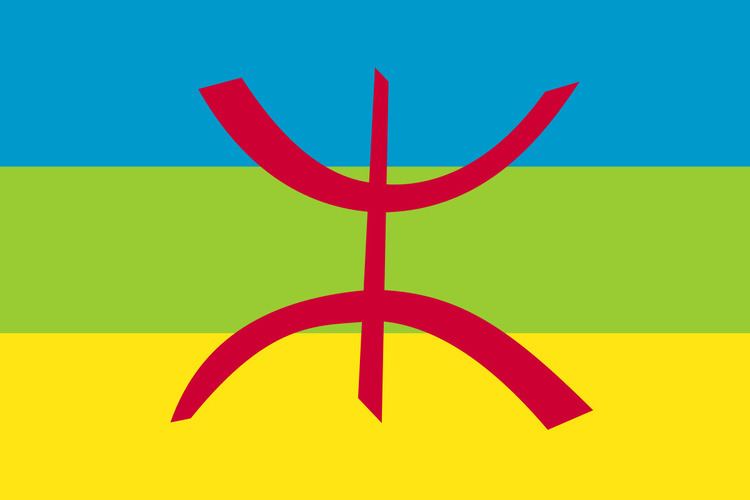 | ||
The Berber flag (Berber: ⴰⵛⵏⵢⴰⵍ ⴰⵎⴰⵣⵉⵖ, Acenyal Amaziɣ) is a flag that has been proposed for the Berbers. It is currently widely used by most Berber activists in 10 African countries. The flag was inaugurated in Ouadhia, a town of Kabylia situated in Tizi Ouzou, a wilaya of Algeria, by an elder Algerian Kabylian mujahid named Mohand Arav Bessaoud. He was considered a spiritual father of Berberism and was also a writer and an activist of the Algerian Revolution.
Contents
History
In the 1970s the Berber Academy (Agraw Imazighen) proposed the first Berber flag. In 1998 the World Amazigh Congress made the flag official at Tafira on Las Palmas in the Canary Islands, which were formerly inhabited by the Guanches, an ancient Berber people.
The flag is composed of blue, green, and yellow horizontal bands of the same height, and a Tifinagh letter yaz or aza.
Description
Each colour corresponds to an aspect of Tamazgha, the territory inhabited by Berbers in North Africa:
The yaz symbolizes the "free man", which is the meaning of the Berber word amazigh, the Berbers' own name for themselves (endonym). It is in red, the colour of life, and also the colour of resistance.
The Berber flag thus symbolizes the entire Amazigh people, living in harmony with their land, Tamazgha.
